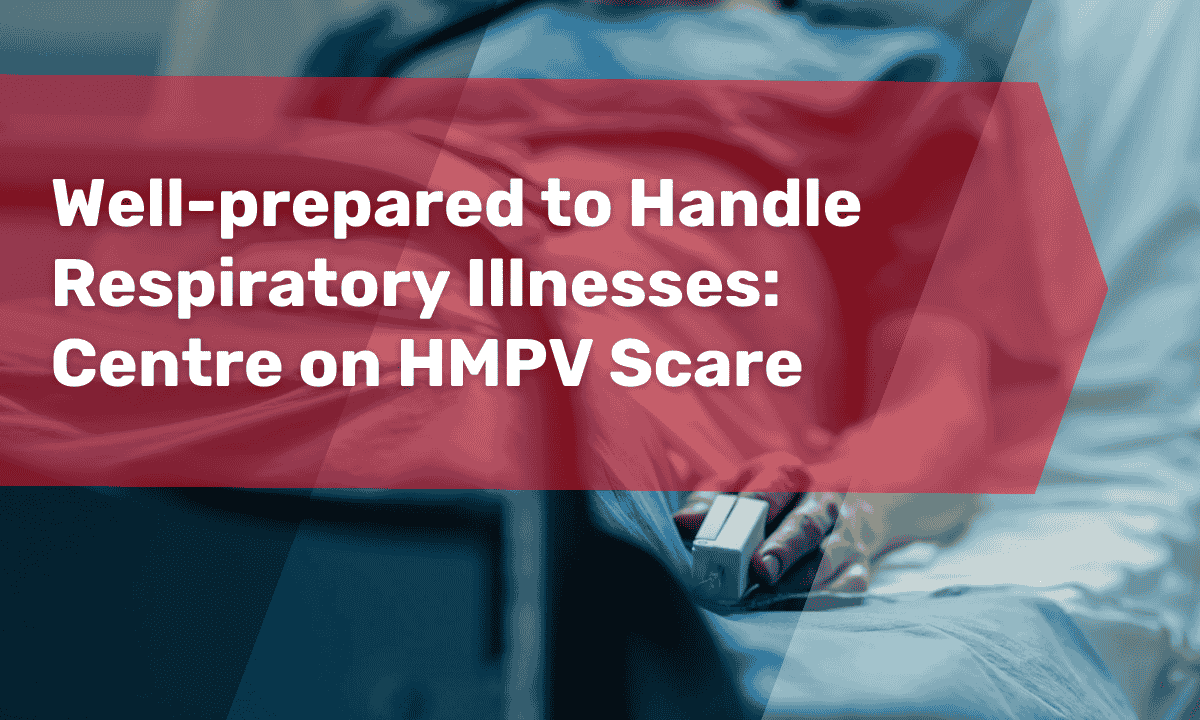Well-prepared to Handle Respiratory Illnesses: Centre on HMPV Scare
India's health ministry assures no unusual surge in respiratory illnesses amidst the HMPV scare. Robust surveillance and preparedness measures are in place.

In the wake of reports about a possible outbreak of Human Metapneumovirus (HMPV) in China, India’s Health Ministry has issued a statement to reassure the public. According to the ministry, India is well-prepared to manage respiratory illnesses and has observed no unusual surge in cases. The government is closely monitoring the situation and is taking proactive steps to ensure robust preparedness.
Enhanced Laboratory Testing for HMPV
To address concerns about the spread of HMPV, the government is:
- Increasing the number of laboratories capable of testing for HMPV.
- Tasking the Indian Council of Medical Research (ICMR) with year-round monitoring of HMPV trends.
- Strengthening existing systems to identify and respond to respiratory illness cases efficiently.
These measures aim to enhance the country’s capability to identify any unusual patterns or outbreaks in real time.
Collaboration with Global and National Experts
The Health Ministry convened a meeting that included experts from:
- World Health Organization (WHO)
- Disaster Management (DM) Cell
- Integrated Disease Surveillance Programme (IDSP)
- National Centre for Disease Control (NCDC)
- Leading institutions such as AIIMS-Delhi
After thorough discussions, experts concluded that the situation in China aligns with the ongoing flu season and does not indicate an extraordinary health crisis. The primary pathogens contributing to the surge in China include influenza viruses, RSV, and HMPV—all common during this time of year.
Monitoring and Surveillance: A Strong Foundation
India’s health surveillance systems are well-established and include:
- Influenza-Like Illness (ILI) and Severe Acute Respiratory Illness (SARI) Monitoring:
- These systems, managed by both the ICMR and IDSP, collect and analyze data from across the country.
- Recent data indicates no unusual surge in respiratory illnesses.
- Testing for Multiple Pathogens:
- The ICMR network regularly tests for a range of respiratory viruses, including HMPV, Adenovirus, and RSV.
- Current trends show no significant increase in these pathogens among tested samples.
Preparedness Drill Results
Earlier this year, a nationwide preparedness drill was conducted to evaluate India’s capacity to manage respiratory illnesses. The results were encouraging:
- Hospitals and healthcare facilities demonstrated readiness to handle potential increases in cases.
- Data confirmed that health systems are equipped to manage seasonal variations without strain.
No Surge in Respiratory Illness Cases
Healthcare professionals and physicians from leading hospitals have corroborated the ministry’s findings. Over the past few weeks, there has been no unusual surge in respiratory illness cases beyond the expected seasonal fluctuations.
Key Highlights from the Ministry’s Statement:
- “The government is keeping a close watch over the situation through all available channels,” the ministry stated.
- The WHO has been requested to share timely updates regarding the situation in China.
- Seasonal respiratory viruses like influenza, RSV, and HMPV are already in circulation in India, with no signs of abnormal activity.
Public Advisory: Stay Informed, Stay Safe
While the ministry’s statement brings reassurance, it’s essential for the public to remain vigilant:
- Practice good hygiene by washing hands regularly and using masks in crowded places.
- Consult a doctor if experiencing symptoms of respiratory illness.
- Stay updated through credible sources like government health advisories and WHO updates.
India’s Health Ministry’s proactive measures and robust surveillance systems ensure the country’s preparedness for any potential health emergencies. The collaborative efforts between global and national health organizations underline the commitment to safeguarding public health. While the HMPV scare has raised concerns globally, India remains well-equipped and vigilant, ensuring minimal risk to its population.

